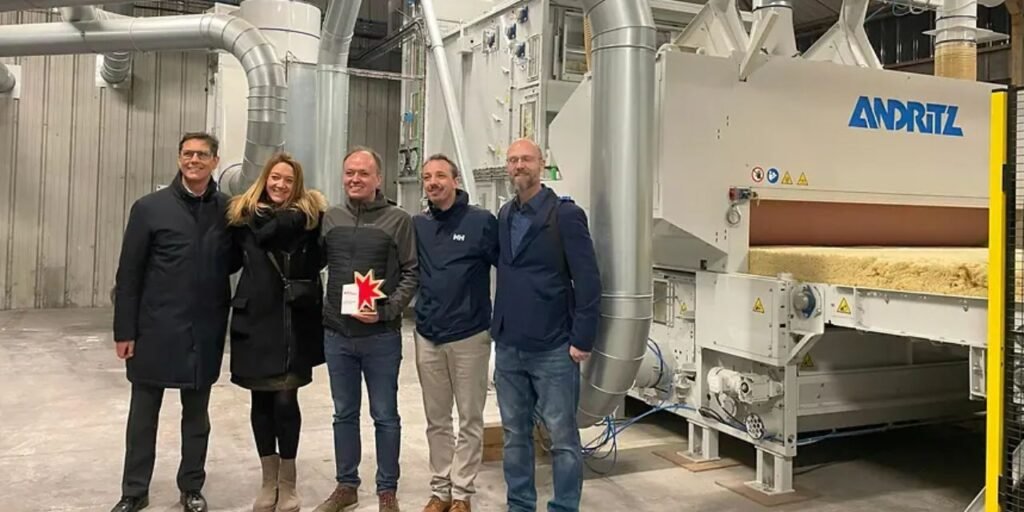For Revibat, France, the global technology company ANDRITZ has provided and put into service a cutting-edge neXline airlay system.

In front of the ANDRITZ neXline airlay system at the opening ceremony, from left to right, are Alexandre Butté, ANDRITZ; Sophie Bretillon Charrier, Revibat; Nicolas Brousse, Revibat; Alexis Gautier, ANDRITZ; and Jörg Eberle, Schott & Meissner.
This cutting-edge line, which was launched in early February, makes it possible to turn glass wool waste that would otherwise end up in landfills into building insulation panels.
Revibat can now turn complicated garbage collected in the Paris area into useful goods thanks to the new ANDRITZ line. Giving insulating glass wool waste a second chance at life and lowering the carbon footprint throughout the production chain are the two main issues that the patented technology attempts to solve.
A major step towards a circular economy in the insulation sector, the line can process up to 1,500 kg of fibre per hour and is particularly developed to create a special nonwoven material.
“Our new ANDRITZ neXline airlay system represents a major milestone in our market as it enables us to start producing building insulation panels from glass wool waste,” says Nicolas Brousse, CEO of Revibat. By bringing this solution as near to the garbage as feasible, we hope to reduce our carbon impact and spread it throughout France. It has been enjoyable and crucial to the creation of this distinctive product to collaborate with the professionals at the ANDRITZ technical centre in Cours.
Revibat specialises in turning recycled building debris into building materials. Its objective has been to resolve the problem of glass wool recycling, which had hitherto been unresolved. With a state-of-the-art laboratory, Revibat processes glass wool waste on an industrial scale, aiming to position itself as a key player in supporting eco-organizations in their efforts to collect, consolidate, and recover building waste and materials.
